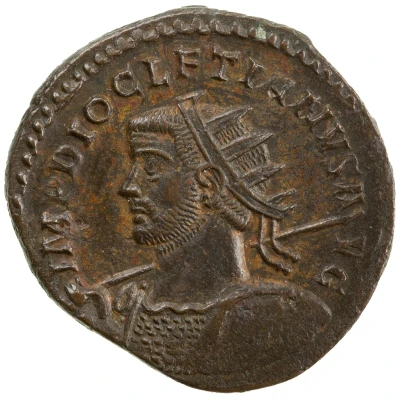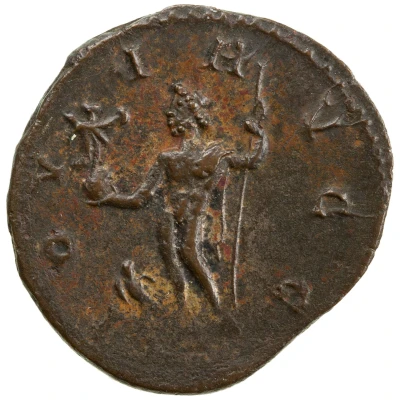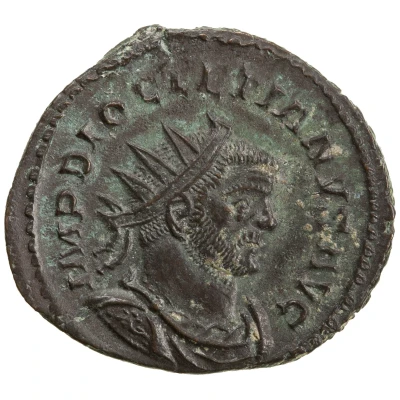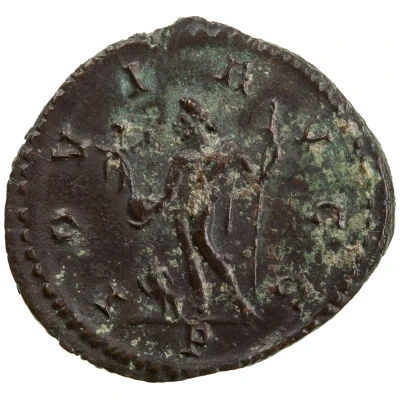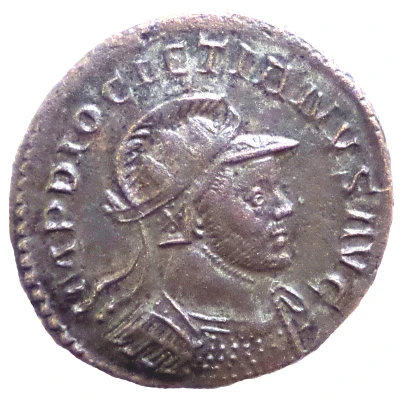
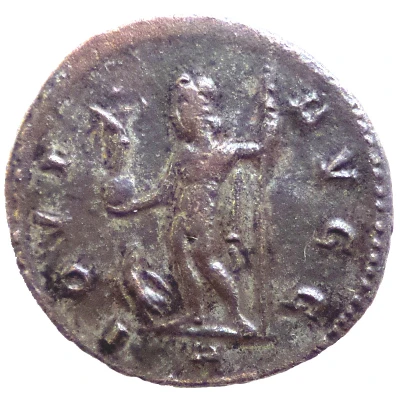

© Rayban35
Antoninianus - Diocletianus IOVI AVGG; Lugdunum
| Billon (.048 silver) | 3.64 g | 22 mm |
| Issuer | Rome › Roman Empire (27 BC - 395 AD) |
|---|---|
| Emperor | Diocletian (Gaius Aurelius Valerius Diocletianus) (284-305) Maximian Herculius (Marcus Aurelius Valerius Maximianus) (286-305) |
| Type | Standard circulation coin |
| Years | 290-292 |
| Value | Antoninianus (1) |
| Currency | Antoninianus, Reform of Caracalla (AD 215 – 301) |
| Composition | Billon (.048 silver) |
| Weight | 3.64 g |
| Diameter | 22 mm |
| Thickness | 1 mm |
| Shape | Round (irregular) |
| Technique | Hammered |
| Orientation | Variable alignment ↺ |
| Demonetized | Yes |
| Updated | 2024-10-05 |
| Numista | N#120898 |
|---|---|
| Rarity index | 95% |
Reverse
Jupiter standing left, nude but chlamys hanging over left shoulder, holding sceptre with left hand and a small winged Victory on globe with right extended hand; at feet, an eagle standing left with head turned right, looking upwards.
Officina mark in exergue.
Script: Latin
Lettering:
IOVI AVGG
A
Translation:
Jovi Augg (= augustorum duorum):
"Jupiter of the Two Augusts".
Interesting fact
One interesting fact about this coin is that it was issued during the reign of Diocletian, who was known for his economic and military reforms, including the introduction of a new currency system that replaced the traditional Roman denarius with the argenteus and the Antoninianus, which was a coin made of billon, like this one. This coin, in particular, was minted in Lugdunum (modern-day Lyon, France) and bears the image of Jupiter, the Roman god of thunder, on the obverse, and the emperor's name and title on the reverse. Despite its small size and relatively low silver content, this coin was an important part of the Roman Empire's economy during a time of significant change and upheaval.
